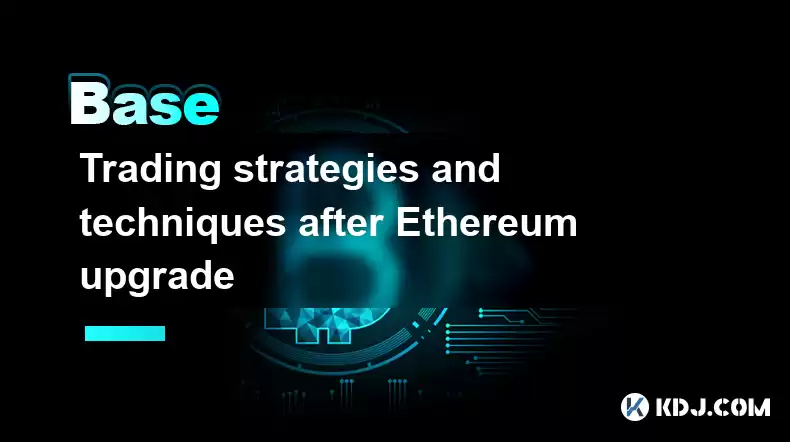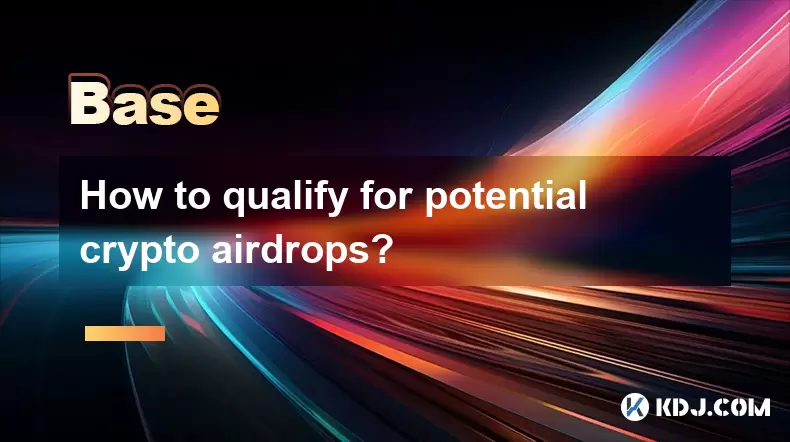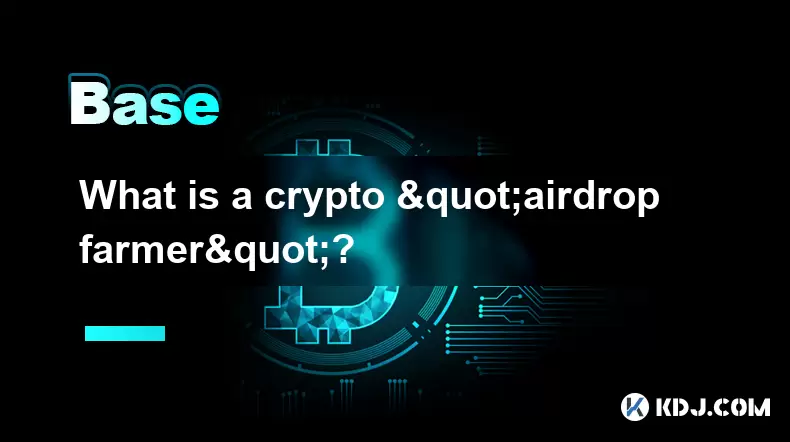-
 Bitcoin
Bitcoin $115100
-2.99% -
 Ethereum
Ethereum $3642
-1.38% -
 XRP
XRP $3.027
-5.51% -
 Tether USDt
Tether USDt $1.000
-0.05% -
 BNB
BNB $763.4
-1.32% -
 Solana
Solana $177.2
-5.42% -
 USDC
USDC $0.9999
-0.02% -
 Dogecoin
Dogecoin $0.2247
-6.47% -
 TRON
TRON $0.3135
0.23% -
 Cardano
Cardano $0.7824
-4.46% -
 Hyperliquid
Hyperliquid $42.53
-0.97% -
 Stellar
Stellar $0.4096
-6.09% -
 Sui
Sui $3.662
-2.61% -
 Chainlink
Chainlink $17.63
-3.57% -
 Bitcoin Cash
Bitcoin Cash $536.3
2.94% -
 Hedera
Hedera $0.2450
0.34% -
 Avalanche
Avalanche $23.23
-3.15% -
 Litecoin
Litecoin $112.2
-1.23% -
 UNUS SED LEO
UNUS SED LEO $8.976
-0.30% -
 Shiba Inu
Shiba Inu $0.00001341
-2.72% -
 Toncoin
Toncoin $3.101
-2.44% -
 Ethena USDe
Ethena USDe $1.001
-0.05% -
 Uniswap
Uniswap $10.08
-1.97% -
 Polkadot
Polkadot $3.938
-2.77% -
 Monero
Monero $323.9
0.87% -
 Dai
Dai $0.9999
-0.02% -
 Bitget Token
Bitget Token $4.481
-1.69% -
 Pepe
Pepe $0.00001199
-5.94% -
 Aave
Aave $288.2
-0.68% -
 Cronos
Cronos $0.1279
0.36%
Trading strategies and techniques after Ethereum upgrade
Every major upgrade of Ethereum may bring new opportunities and challenges. Investors need to pay attention to market responses and formulate corresponding trading strategies, such as pre-layout, event-driven, etc., to seize the upgrade dividends.
Apr 11, 2025 at 10:21 am

Every major upgrade of Ethereum may bring new opportunities and challenges to the market. Smart investors will closely monitor the upgraded market reaction and formulate corresponding trading strategies to seize the dividends brought by the upgrade. This article will introduce in detail the commonly used trading strategies and techniques after Ethereum upgrade to help you gain an advantage in the market.
Important statement: The cryptocurrency market is volatile. This article is for reference only and does not constitute any investment advice. Be sure to make investment decisions based on your own risk tolerance.
1. Understand the core impact of Ethereum upgrade
Before formulating a trading strategy, you need to understand the core impact of the Ethereum upgrade:
Network performance improvement: Upgrades usually increase transaction speed and reduce transaction fees, thereby improving user experience.
Security enhancement: Upgrades may fix vulnerabilities, enhance network attack resistance, and improve platform security.
Ecosystem expansion: Upgrades may introduce new technical features, bringing more possibilities to applications such as DeFi, NFT, GameFi, etc.
Changes in market sentiment: Upgrading may increase market confidence in Ethereum and attract more capital inflows.
2. Ethereum’s upgraded trading strategy
Pre-layout strategy: Buy Ethereum in advance before upgrading, and wait for the price to rise after the upgrade is completed.
Applicable scenarios: Applicable to investors who are full of confidence in the upgrade of Ethereum and believe that the upgrade will bring long-term benefits.
Risk warning: There is a risk of price decline due to failure or lower than expected upgrades.
Event-driven strategy: During the upgrade process or after the upgrade is completed, trade according to the actual market reaction.
Applicable scenarios: Suitable for traders who are good at observing market trends and responding quickly.
Risk warning: We need to pay close attention to market information and adjust trading strategies in a timely manner.
Callback buying strategy: After upgrading, if the Ethereum price pulls back, you can buy on dips.
Applicable scenarios: Applicable to investors who believe that Ethereum has good long-term prospects but may fluctuate in the short term.
Risk warning: You need to judge the amplitude and time of the callback to avoid failure in buying at the bottom.
Trend tracking strategy: After upgrading, if the Ethereum price shows a significant upward trend, you can buy it with the trend.
Applicable scenarios: Suitable for traders who are good at technical analysis and able to identify trends.
Risk warning: You need to stop losses in time to avoid losses caused by trend reversal.
DeFi mining strategy: Take advantage of the opportunity to improve the performance of Ethereum network after the upgrade, participate in DeFi mining and earn profits.
Applicable scenarios: Suitable for investors who are familiar with DeFi mining and have certain risk tolerance.
Risk warning: You need to understand the risks of DeFi projects, such as smart contract vulnerabilities, liquidity risks, etc.
3. Transaction skills after Ethereum upgrade
Follow official information: Pay close attention to Ethereum's official announcements to understand the specific content, timetable and potential risks of the upgrade.
Track market sentiment: Pay attention to social media, news media and other channels to understand the overall market sentiment towards Ethereum upgrade.
Use technical analysis tools: use K-line charts, moving averages, MACD and other technical indicators to analyze the price trend of Ethereum to assist in judging the timing of buying and selling.
Control positions: Control positions reasonably based on your own risk tolerance and avoid excessive investment.
Set stop loss: Set the stop loss point and automatically sell when the price falls to a certain level to avoid the loss from expanding.
Flexible response: The market is unpredictable, and trading strategies need to be adjusted in a timely manner according to actual conditions.
4. Risk warning
Market volatility: The cryptocurrency market is extremely volatile, and even if an effective trading strategy is adopted, there is a risk of loss.
Risk of upgrade failure: While Ethereum upgrades usually go smoothly, there is still a risk of upgrade failure, which can lead to a sharp drop in prices.
Regulatory policy risks: There is uncertainty in government regulatory policies on cryptocurrencies, which may have an impact on Ethereum’s prices.
5. Summary
The upgrade of Ethereum has brought new opportunities for traders, but it also comes with risks. Only by fully understanding market trends and mastering effective trading strategies and techniques can you gain an advantage in the market. I wish you a smooth transaction!
Disclaimer:info@kdj.com
The information provided is not trading advice. kdj.com does not assume any responsibility for any investments made based on the information provided in this article. Cryptocurrencies are highly volatile and it is highly recommended that you invest with caution after thorough research!
If you believe that the content used on this website infringes your copyright, please contact us immediately (info@kdj.com) and we will delete it promptly.
- VIRTUAL Weekly Drop: Recovery Analysis and Privacy Push
- 2025-07-26 08:50:11
- Bitcoin, Cynthia Lummis, and Freedom Money: A New Yorker's Take
- 2025-07-26 08:30:11
- Crypto Gainers, Top 10, Week 30: Altcoins Buck the Trend
- 2025-07-26 08:55:12
- Solana, Altcoins, and Coinbase: What's the Buzz?
- 2025-07-26 06:30:12
- XRP in 2025: Bull Run or Bust?
- 2025-07-26 07:30:12
- Crypto Legislation, Blockchain Hiring, and Coinbase Applications: A New Era?
- 2025-07-26 08:30:11
Related knowledge

What is the difference between CeFi and DeFi?
Jul 22,2025 at 12:28am
Understanding CeFi and DeFiIn the world of cryptocurrency, CeFi (Centralized Finance) and DeFi (Decentralized Finance) represent two distinct financia...

How to qualify for potential crypto airdrops?
Jul 23,2025 at 06:49am
Understanding What Crypto Airdrops AreCrypto airdrops refer to the distribution of free tokens or coins to a large number of wallet addresses, often u...

What is a crypto "airdrop farmer"?
Jul 24,2025 at 10:22pm
Understanding the Role of a Crypto 'Airdrop Farmer'A crypto 'airdrop farmer' refers to an individual who actively participates in cryptocurrency airdr...

What is the difference between a sidechain and a Layer 2?
Jul 20,2025 at 11:35pm
Understanding the Concept of SidechainsA sidechain is a separate blockchain that runs parallel to the main blockchain, typically the mainnet of a cryp...

What is the Inter-Blockchain Communication Protocol (IBC)?
Jul 19,2025 at 10:43am
Understanding the Inter-Blockchain Communication Protocol (IBC)The Inter-Blockchain Communication Protocol (IBC) is a cross-chain communication protoc...

How does sharding improve scalability?
Jul 20,2025 at 01:21am
Understanding Sharding in BlockchainSharding is a database partitioning technique that is increasingly being adopted in blockchain technology to enhan...

What is the difference between CeFi and DeFi?
Jul 22,2025 at 12:28am
Understanding CeFi and DeFiIn the world of cryptocurrency, CeFi (Centralized Finance) and DeFi (Decentralized Finance) represent two distinct financia...

How to qualify for potential crypto airdrops?
Jul 23,2025 at 06:49am
Understanding What Crypto Airdrops AreCrypto airdrops refer to the distribution of free tokens or coins to a large number of wallet addresses, often u...

What is a crypto "airdrop farmer"?
Jul 24,2025 at 10:22pm
Understanding the Role of a Crypto 'Airdrop Farmer'A crypto 'airdrop farmer' refers to an individual who actively participates in cryptocurrency airdr...

What is the difference between a sidechain and a Layer 2?
Jul 20,2025 at 11:35pm
Understanding the Concept of SidechainsA sidechain is a separate blockchain that runs parallel to the main blockchain, typically the mainnet of a cryp...

What is the Inter-Blockchain Communication Protocol (IBC)?
Jul 19,2025 at 10:43am
Understanding the Inter-Blockchain Communication Protocol (IBC)The Inter-Blockchain Communication Protocol (IBC) is a cross-chain communication protoc...

How does sharding improve scalability?
Jul 20,2025 at 01:21am
Understanding Sharding in BlockchainSharding is a database partitioning technique that is increasingly being adopted in blockchain technology to enhan...
See all articles

























































































